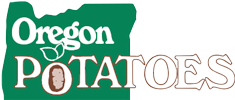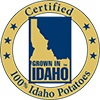Pythium Leak
Causal Agent:
Pythium ultimum and sometimes other Pythium species.
Biology:
Wide host range including many crops. Infection of tubers occurs at wounds.
Dispersal:
Infection can spread from tuber to tuber during harvest and handling. Infected seed can also spread the pathogen.
Fungicide Resistance:
Pythium has begun to demonstrate resistance to fungicides.
Management:
- Crop rotation and destruction of diseased tubers are important.
- Some fungicides applied at planting or during the growing season can reduce losses caused by Pythium leak.
- Harvest with pulp temperatures between 45 and 65 degrees F.
- Minimize mechanical injury to tubers during harvest and handling.
- In storage, encourage maximum suberization and wound periderm formation; do not allow free water on tubers.














